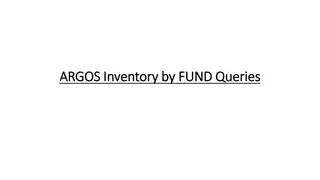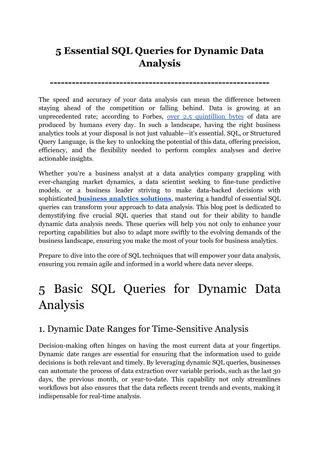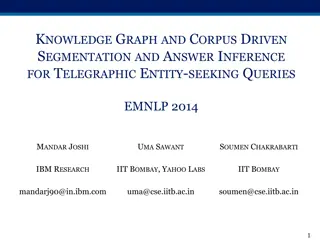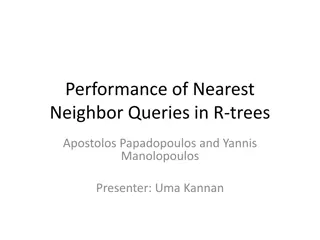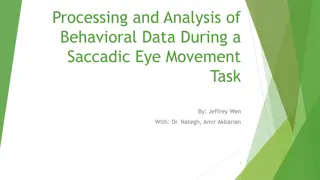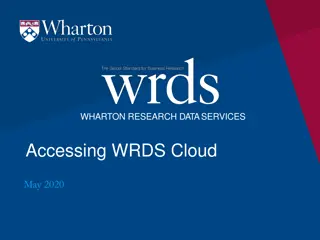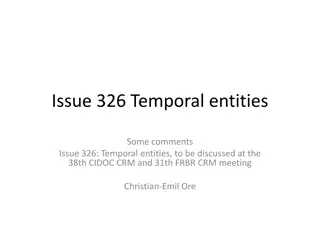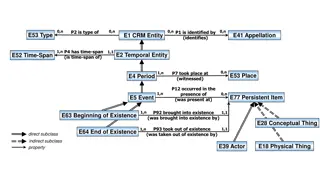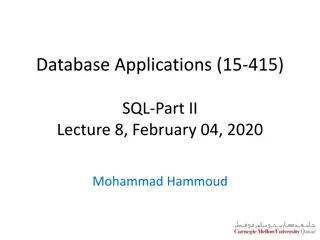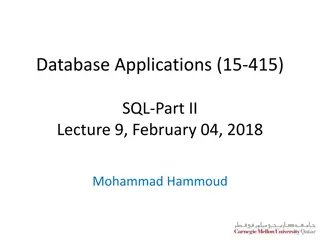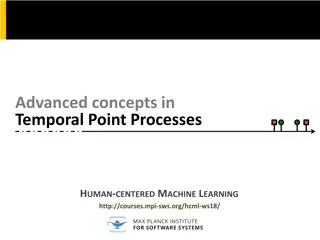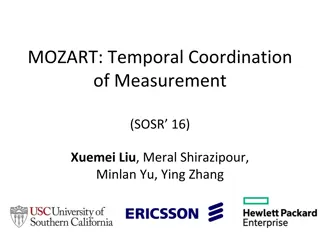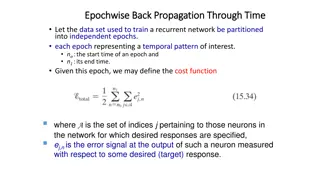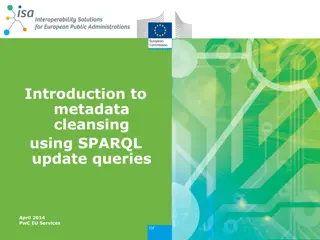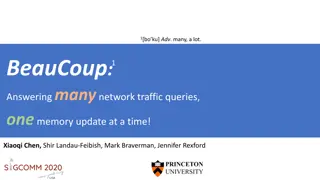Understanding Temporal Data Management in TSQL Queries
Explore the realm of temporal data in TSQL queries, delving into the concepts of valid time and transaction time, different types of relations like snapshot and bi-temporal, and the significance of time dimensions in database management. Learn how temporal databases support time-related queries for better data analysis and decision-making.
Download Presentation

Please find below an Image/Link to download the presentation.
The content on the website is provided AS IS for your information and personal use only. It may not be sold, licensed, or shared on other websites without obtaining consent from the author. Download presentation by click this link. If you encounter any issues during the download, it is possible that the publisher has removed the file from their server.
E N D
Presentation Transcript
TSQL 2 : QUERY LANGUAGE FOR TEMPORAL DATA CS 224 : Advanced Topics in Data Management
temporal : of or pertaining to time
Introduction Element of TIME in DB Queries like What happened at that time? (Simple) e.g What was Mark s salary when he joined? What has happened from then till now? (Complex) e.g Which employees got a raise in past year?
Terminology VALID TIME of a fact; is the time in the real world when the fact is valid TRANSACTION TIME of a fact: when it was recorded in the database
Types of Relation SNAPSHOT relation Standard database VALID-TIME (historical) relation - When did it rain? When did the soccer world cup happen? TRANSACTION-TIME(rollback) relation What was Tom s salary on October 1? BI TEMPORAL relation Supports both valid time and transaction time
Temporal database (DBMS) is a database (DBMS) that supports valid time and/or transaction time
Time Dimension: Temporal Relations Snapshot relation Valid-time relation Transaction-time relation Bitemporal relation
Bi-Temporal Data Jake hiring reflects single hiring but changes in the modeled reality and the transaction time
TSQL2 (Valid-Time Relation) QUICK TOUR
Valid-Time Relation VALIDTIME : At each point in time . POINT: DATE in above example
Valid-Time Relation LIST ALL EMPLOYES WHO WERE NOT MANAGERS VALIDTIME : At each point in time . POINT: DATE in above example
Valid-Time Relation EXTRACT THE SIZE HISTORY OF THE DEPARTMENT VALIDTIME : At each point in time . POINT: DATE in above example
Valid-Time Relation CHANGE THE MANAGER OF TOOLS DEPT FOR 1994 to BOB VALIDTIME : At each point in time . POINT: DATE in above example
TSQL2 (Validtime Relation) How to think about it?
SNAPSHOT RELATION q: STANDARD SQL QUERY
TEMPORAL (Valid-Time) RELATION q: STANDARD SQL QUERY
TEMPORAL (Valid-Time) RELATION q: HISTORICAL TSQL QUERY : Give history of monthly salaries paid to employees (Sequence Query)
TEMPORAL (Valid-Time) RELATION u: TSQL UPDATE QUERY : Change the town named TUSCON to TUCSON (Sequence Query)
TEMPORAL (Valid-Time) RELATION q: Who was given SALARY raises ? (Non Sequence Query)
TEMPORAL (Valid-Time) RELATION U: Give employees 5% raise if they never had a raise before? (Non Sequence Query)
TSQL2(Transaction Time) Problem Definition
Transaction Time What is the need? Applications need to keep track of the past states of the database, often for auditing requirements Changes are not allowed on the past states; that would prevent secure auditing. Instead, compensating transactions are used to correct errors.
Transaction Time What is the need? We find out that the telephone bill for a department is unusually high, so we ask How many employees have been in each department" to get a start.
Transaction Time What is the need? It turns out that one of the departments shows an unreasonable number of current employees (more than 25). When was the error introduced? How long has the database been incorrect? The query When did we think that departments are overly large? provides an initial answer, but is also very difficult to express in SQL.
TSQL2 (Transaction Time Relations) Quick Tour
TEMPORAL RELATION(Transaction Time) Jake hiring reflects single hiring but changes in the modeled reality and the transaction time
TEMPORAL RELATION(Transaction Time) When was the street corrected, and what were the old and new values? (Nonsequence tx time & sequenced vt time)
TEMPORAL RELATION(Transaction Time) When did we think that someone lived somewhere for more than six months?
TEMPORAL RELATION(Transaction Time) Assume it is now October 1, 1995. Lilian moved last June 1. (PostActive update)
TEMPORAL RELATION(Transaction Time) When was an employee's address for 1995 corrected?" (run on Nov 1 95)
QUESTIONS ? Prepared by Puneet Mehta


